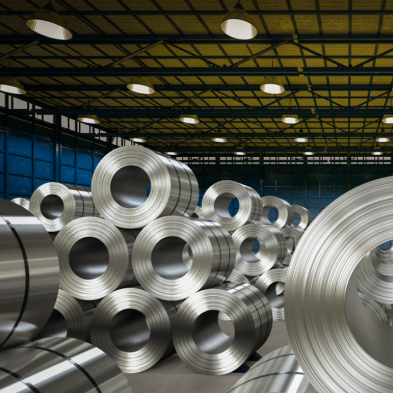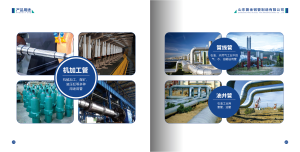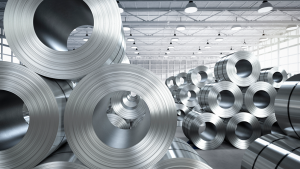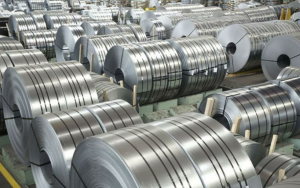Stainless steel 304 and 304L are also known as stainless steel 1.4301 and 1.307 respectively. Type 304 is the most versatile and widely used stainless steel. It is still sometimes referred to by its old name 18/8 which is derived from the nominal composition of type 304 being 18% chromium and 8% nickel. Type 304 stainless steel is an austenitic grade that can be severely deep drawn. This property has resulted in 304 being the dominant grade used in applications like sinks and saucepans. Type 304L is the low carbon version of 304. It is used in heavy gauge components for improved weldability. Some products such as plate and pipe may be available as “dual certified” material that meets the criteria for both 304 and 304L. 304H, a high carbon content variant, is also available for use at high temperatures. Property given in this data sheet is typical for flat rolled products covered by ASTM A240/A240M. It is reasonable to expect specifications in these standards to be similar but not necessarily identical to those given in this data sheet.
Application
Saucepans
Springs, screws, nuts & bolts
Sinks & splash backs
Architectural panelling
Tubing
Brewery, food, dairy and pharmaceutical production equipment
Sanitary ware and troughs
Cutlery and flatware
Supplied Forms
Sheet
Strip
Bar
Plate
Pipe
Tube
Coil
Fittings
Alloy Designations
Stainless steel grade 1.4301/304 also corresponds to: S30400, 304S11 and EN58E.
Corrosion Resistance
304 has excellent corrosion resistance in many environments and when in contact with different corrosive media. Pitting and crevice corrosion can occur in environments containing chlorides. Stress corrosion cracking can occur above 60°C.
Heat Resistance
304 has good heat resistance to oxidation in intermittent service up to 870°C and in continuous service up to 925°C. However, continuous use at 425-860°C is not recommended. In this instance 304L is recommended due to its resistance to carbide precipitation. Where high strength is required at temperatures above 500°C and up to 800°C grade 304H is recommended . this material will retain aqueous corrosion resistance.
Fabrication
Fabrication of all stainless steels should be done only with tools dedicated to stainless steel materials. Tooling and work surfaces must be thoroughly cleaned before use. These precautions are necessary to avoid cross contamination of stainless steel by easily corroded metals that may discolour the surface of the fabricated product.
Cold Working
304 stainless steel readily work hardens. Fabrication methods involving cold working may require an intermediate annealing stage to alleviate work hardening and avoid tearing or cracking. At the completion of fabrication a full annealing operation should be employed to reduce internal stresses and optimise corrosion resistance.
Hot Working
Fabrication methods like forging, that involve hot working should occur after uniform heating to 1149-1260°C. The fabricated components should then be rapidly cooled to ensure maximum corrosion resistance.
Machinability
304 has good machinability. Machining can be enhanced by using the following rules: Cutting edges must be kept sharp. Dull edges cause excess work hardening. Cuts should be light but deep enough to prevent work hardening by riding on the surface of the material. Chip breakers should be employed to assist in ensuring swarf remains in heat concentrating at the cutting edges. This means coolants and lubricants are necessary and must be used in large quantities.
Heat Treatment
304 stainless steel cannot be hardened by heat treatment. Solution treatment or annealing can be done by rapid cooling after heating to 1010- 1120°C.
Weldability
Fusion welding performance for type 304 stainless steel is excellent both with and without fillers. Recommended filler rods and electrodes for stainless steel 304 is grade 308 stainless steel. For 304L the recommended filler is 308L. Heavy welded sections may require post-weld annealing. This step is not required for 304L. Grade 321 may be used if post-weld heat treatment is not possible.
Chemical Compositions
| Element | % Present |
|---|---|
| Carbon (C) | 0.03 |
| Chromium (Cr) | 17.50 – 19.50 |
| Manganese (Mn) | 2.00 |
| Silicon (Si) | 1.00 |
| Phosphorous (P) | 0.045 |
| Sulphur (S) | 0.015b) |
| Nickel (Ni) | 8.00 – 10.50 |
| Nitrogen (N) | 0.10 |
| Iron (Fe) | Balance |
Mechanical properties
| Property | Value |
|---|---|
| Proof Stress | 200 Min MPa |
| Tensile Strength | 500 – 700 MPa |
| Elongation | 45 Min% |
Physical Properties
| Property | Value |
|---|---|
| Density | 8000.00 Kg/m3 |
| Melting Point | 1450 °C |
| Thermal Expansion | 17.2 x 10-6 /K |
| Modulus of Elasticity | 193 GPa |
| Thermal Conductivity | 16.2W/m.K |
| Electrical Resistivity | 0.072 x 10-6 Ω .m |




